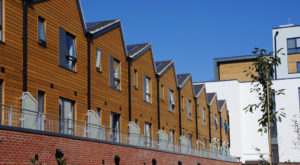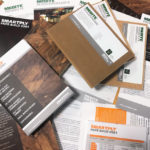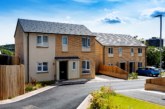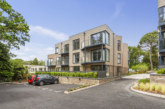Greater understanding of flame-retardant treatments for external timber surfaces is essential, say the Timber Trade Federation (TTF) and the Wood Protection Association (WPA).
Greek philosopher Socrates once said that ‘Education is the kindling of a flame’. Knowledge amongst specifiers on flame retardant treatments for timber materials used externally on a building needs re-kindling, judging by the debate following the external fire at Samuel Garside House a few months ago. Two wood industry bodies, the Timber Trade Federation (TTF) and the Wood Protection Association (WPA), are now working together to extend and refresh specifiers’ and building control officers’ understanding of this crucial topic.
A recent survey of specifiers by a WPA member revealed that just over 70% of those surveyed were unable to define what is meant by the term ‘fire resistance’ and just under 60% were unable to explain the term ‘reaction to fire’. To correctly specify for, or inspect, buildings with external timber detailing such as timber cladding, it is vital to understand the both the terminology and the treatment options available, and the benefits that flame-retardant treatments can impart.
 Method matters
Method matters
The term ‘FR’ means different things to different people. In relation to timber it is generally understood to mean ‘Flame Retardant’. In a fire situation, flames spread at first across the surface of wood. A flame-retardant treatment impedes the timber’s ignitability and natural spread of flame, slowing the growth of the fire, and providing vital extra time for escape and evacuation.
The TTF and WPA recommend two methods by which wood products should receive flame-retardant treatment. The first is the inclusion of the flame-retardant during the manufacture of the product, for example in certain brands of MDF and OSB wood panel products. The second method is applying the flame retardant to finished wood products, such as timber cladding or sheet materials, in a controlled industrial process, away from the building site. Treatment must take place in factory-controlled conditions and be covered by an accredited quality scheme such as WPA’s ‘Benchmark FR’ certification.
Both TTF and WPA strongly advise against the use of brush-on coatings from a can. The efficacy of these brush-on treatments in an emergency situation relies on the original contractor having correctly applied the coating on-site, to the right depth and consistency, in addition to having in place a regular maintenance scheme. It is hard to prove that this job has been undertaken correctly.
There are also three classifications for flame-retardant treatments, applicable to the service environment for the timber product. WPA’s Type INT1, for timber in dry interior applications, can be used for indoor situations where humidity does not exceed 75%. Type INT2 is a more humidity-resistant treatment suitable for uses such as interior cladding, and for use in weather-protected areas. Type EXT treatments are leach-resistant and used for external situations such as outdoor timber cladding, infrastructure projects etc.
Both trade bodies advise that, with timber, which has received an FR treatment, good design detailing and competent workmanship at the point of installation are still necessary. The uprating of timber using a flame-retardant treatment is complimentary to good design and not a substitute for it. A suite of free online training, initially designed for Building Control Officers and now available to everyone in the construction supply chain on the TTF and WPA websites.
 Specifying performance
Specifying performance
Building Regulations state that external surfaces of a building ‘should adequately resist the spread of flame’. The fundamentals of any specification or inspection regime start with performance requirements, as expressed in Euroclasses under EN 13501. This standard details the product’s ‘Reaction to Fire’ in specific circumstances. Wood products with a flame-retardant treatment can potentially reach as high as Euroclass B (only Euroclass A is higher, but that can only apply to non-combustible materials).
The Euroclass performance requirement for the project and the service environment for the timber are both important factors. The performance of a treated timber product will be found in the product’s Declaration of Performance (DoP). It is also important to check the Reaction to Fire Classification Report for the product, which will give its all-important field of application. It will also give a rating for smoke production (through a small letter ‘s’ and a number) and for production of flaming droplets, indicated with a small letter ‘d’. Thus a product may be labelled as ‘Euroclass B, s-1, d-0’.
Fire test performance and the field of application are extremely specific. If a product’s Classification Report states, for example, that a 25mm Spruce board was tested without an air gap behind it and was mounted on plasterboard during the test, then the flame retardant properties apply only to that product and in that field of application. In other words it cannot be taken to apply to timber that is less than 25mm thick, or of a different species, or installed where there is an air gap or on backing materials deemed to be of higher risk in accordance with BS EN13238.
Performance claims from manufacturers of FR-treated timber products should be thoroughly checked as part of due diligence on the FR product that is being considered. If no Classification Report is available, TTF/WPA advice is very clear: change the supplier.
For a copy of the WPA’s Timber Flame Retardant Specification Check-list click here.









